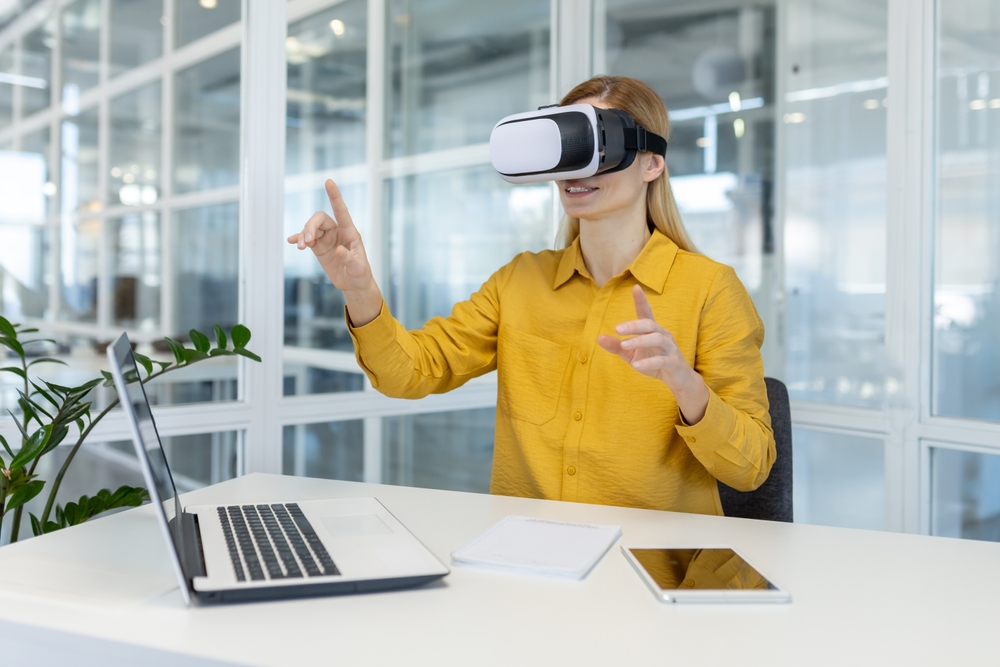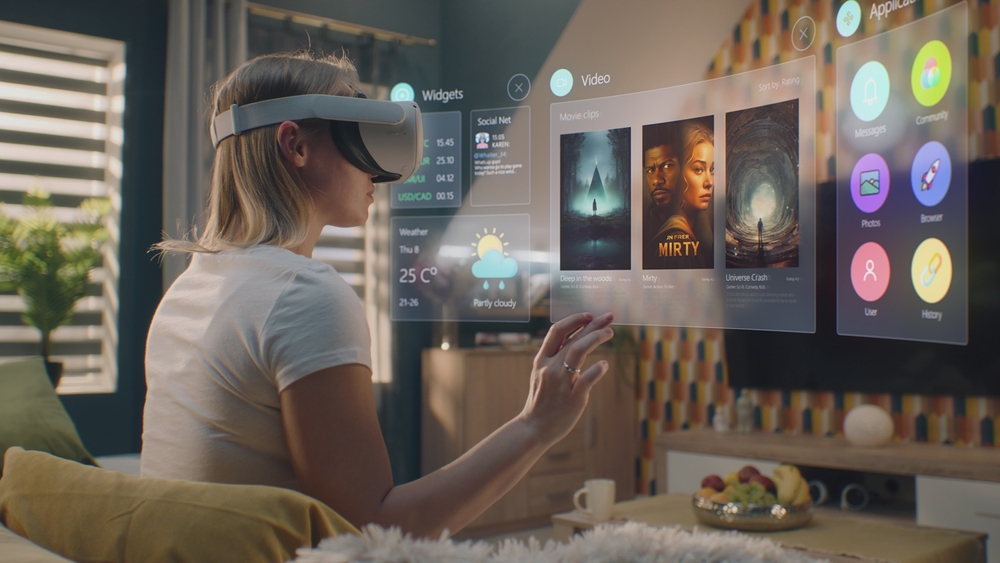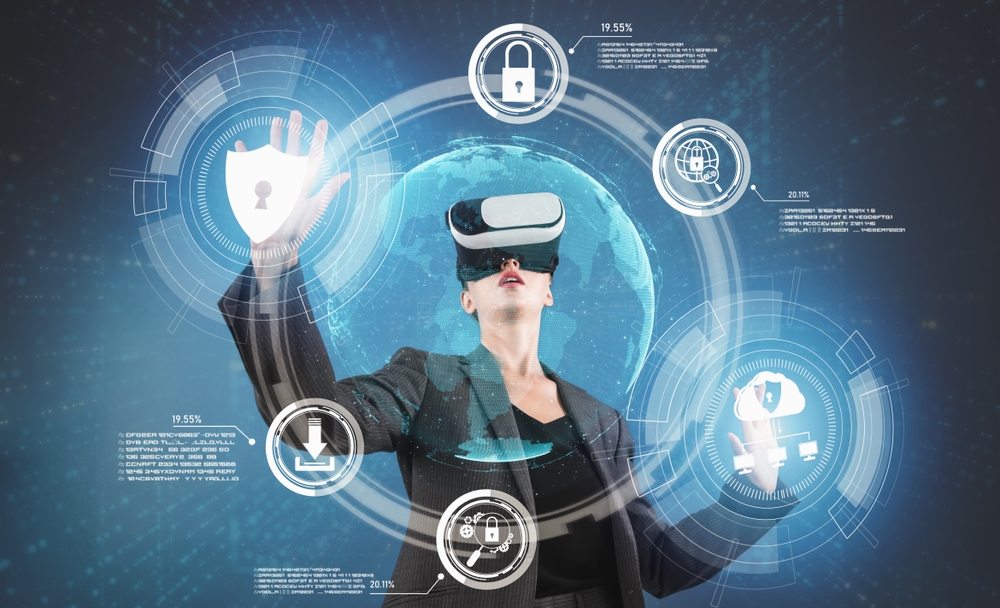Augmented Reality (AR) is reshaping the landscape of education by offering immersive and interactive learning environments. This article explores how AR technologies are revolutionizing educational experiences and enhancing student engagement.
Interactive Learning Tools
AR applications empower students with interactive virtual objects and simulations, fostering immersive, hands-on learning experiences. This technology enhances engagement by allowing students to manipulate and explore virtual elements in real-time, bridging the gap between theoretical concepts and practical application in education.

Virtual Field Trips
AR enables students to explore historical sites, landmarks, and ecosystems via virtual tours, deepening their comprehension of real-world contexts. By overlaying digital information onto physical environments, AR enriches learning with interactive experiences that bring history and natural sciences to life, fostering a deeper understanding and appreciation of cultural and environmental heritage.
Enhanced Visualizations
AR-generated 3D models and visualizations simplify complex concepts in subjects like science and mathematics, enhancing comprehension and engagement. By visualizing abstract theories and phenomena in a tangible, interactive format, AR aids students in grasping intricate scientific and mathematical principles. This immersive approach not only facilitates deeper understanding but also encourages exploration and experimentation, making learning these subjects more accessible and enjoyable.
Language Learning
AR revolutionizes language acquisition by overlaying real-time translations and interactive exercises, fostering immersive language practice. This technology enhances learning environments by allowing students to interact with virtual elements in context, improving comprehension and fluency. By integrating visual and auditory cues, AR promotes engagement and retention, making language learning more dynamic and effective for learners of all levels.

Collaborative Learning
AR fosters collaboration among students by creating shared virtual spaces and facilitating interactive projects, which promote teamwork and communication skills. By enabling students to interact with virtual objects and collaborate on tasks in real-time, AR enhances engagement and encourages active participation. This collaborative learning environment not only strengthens interpersonal skills but also cultivates creativity and problem-solving abilities, preparing students for future challenges in a digitally-driven world.
Training and Simulations
AR-based simulations are instrumental in preparing students for real-world scenarios across various fields like healthcare, engineering, and aviation. By creating immersive and interactive environments, AR enables students to practice and refine skills in a safe and controlled setting. These simulations simulate realistic scenarios, allowing learners to develop critical thinking, decision-making, and problem-solving skills essential for their future careers. This practical approach enhances learning outcomes and prepares students to confidently navigate professional challenges.
Accessibility and Inclusivity
AR technologies cater to diverse learning needs by providing customizable learning experiences and adaptive feedback. This flexibility allows educators to tailor content to individual learning styles and abilities, ensuring that all students can engage effectively with educational materials. AR’s ability to adjust feedback based on user interactions promotes personalized learning pathways, enhancing comprehension and retention. This adaptive approach not only supports inclusive education but also empowers learners to achieve their full potential in an interactive and supportive learning environment.

Gamification of Learning
AR incorporates gamification elements into educational activities, enhancing engagement and motivation among students. By blending learning objectives with interactive game mechanics, AR transforms traditional lessons into immersive experiences that promote active participation and enjoyment. This approach not only increases retention of knowledge but also fosters collaboration and competition among students, encouraging continuous learning and exploration. AR’s gamified approach harnesses the power of play to make education more dynamic, effective, and enjoyable.
Teacher Training and Professional Development
AR tools offer educators immersive training modules and resources that elevate teaching practices. By simulating interactive scenarios and providing real-time feedback, AR enhances educators’ skills in delivering engaging lessons and adapting to diverse learning styles. These tools also facilitate professional development by offering virtual workshops and collaborative platforms, enabling continuous improvement in teaching methodologies. Ultimately, AR empowers educators to create dynamic and effective learning environments that optimize student engagement and educational outcomes.
Ethical and Privacy Considerations
Discussing the ethical implications of AR in education is crucial, encompassing considerations such as data privacy, digital citizenship, and equitable access. AR technology raises concerns about the collection and use of student data, requiring stringent safeguards to protect privacy rights. Additionally, promoting responsible digital citizenship ensures students understand online behavior and digital rights while using AR tools responsibly. Addressing equitable access ensures all students have equal opportunities to benefit from AR-enhanced education, mitigating disparities in technology access and ensuring inclusive learning environments. Balancing innovation with ethical considerations is essential for fostering safe, responsible, and equitable use of AR in education.

Future Directions
Exploring emerging trends in augmented reality (AR) reveals a landscape embracing AR wearables, augmented reality books, and personalized AR learning experiences. AR wearables like smart glasses provide hands-free interaction with digital content, enhancing mobility and immersion in educational settings. Augmented reality books combine printed text with digital overlays, enriching storytelling and interactive learning experiences. Personalized AR learning adapts content to individual preferences and learning styles, fostering engagement and comprehension. These trends signify a transformative shift towards more interactive, personalized, and immersive educational experiences enabled by AR technology.
Conclusion
Augmented Reality (AR) stands at the forefront of transforming education by creating immersive, interactive, and personalized learning experiences. As AR technologies continue to evolve, they promise to revolutionize how students engage with educational content, making learning more engaging, accessible, and effective. However, achieving the full potential of AR in education requires addressing ethical considerations, ensuring inclusive access, and supporting educators with adequate training. Embracing AR responsibly holds the key to unlocking innovative educational opportunities and preparing students for a future driven by technology and digital literacy.

